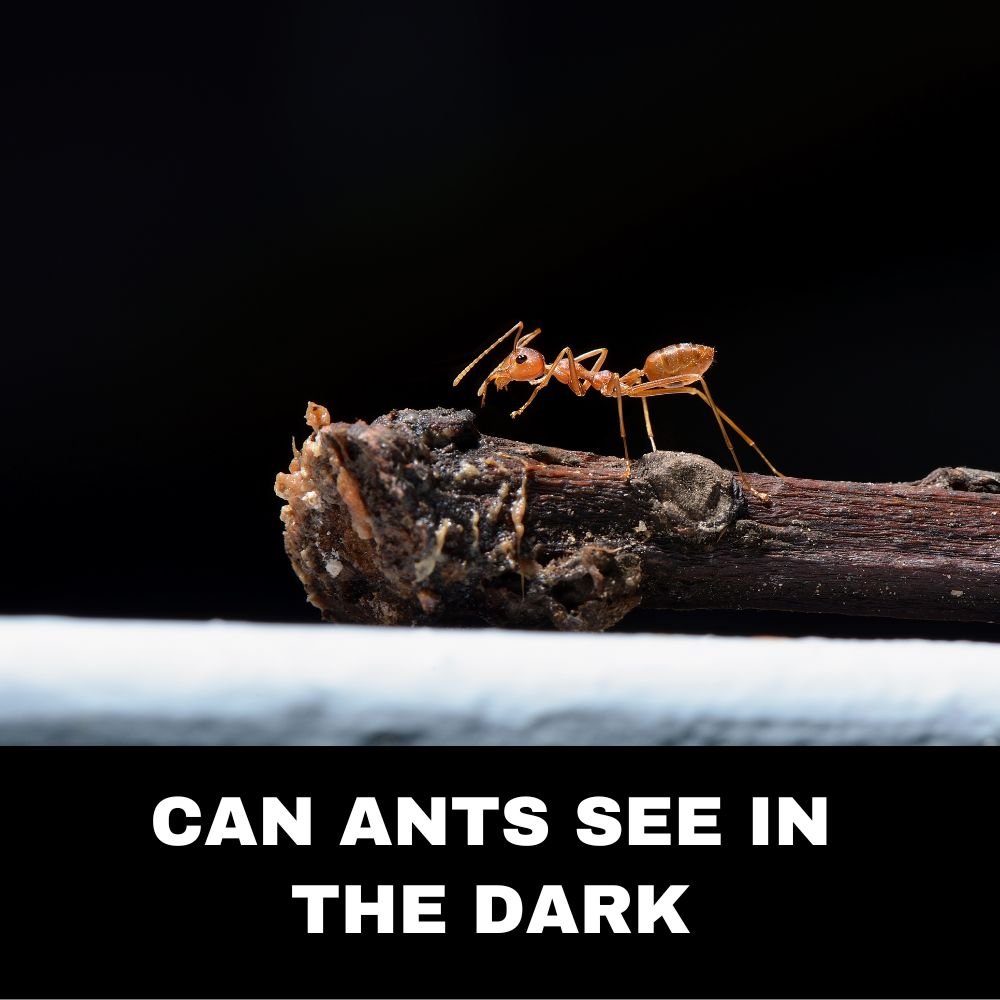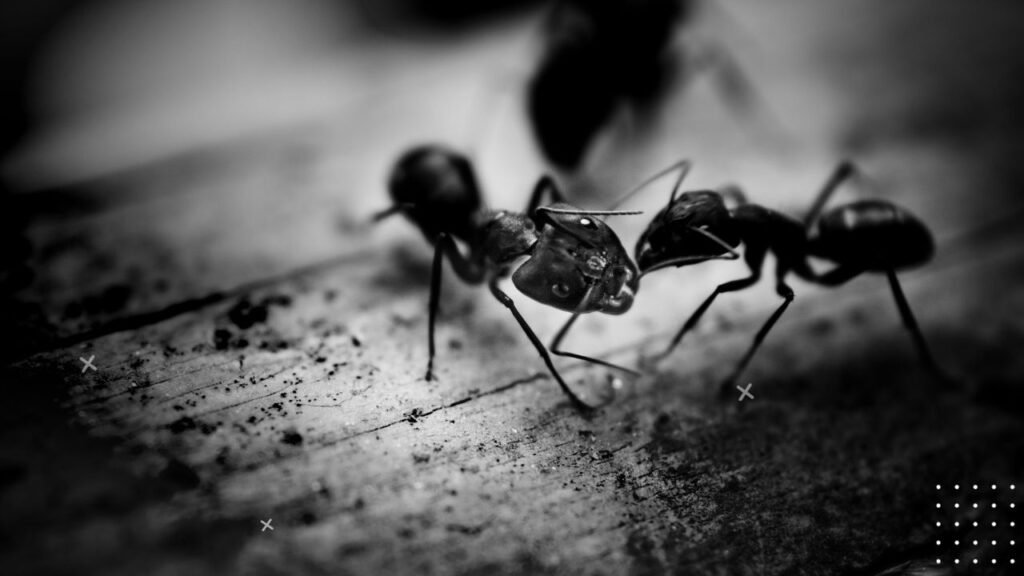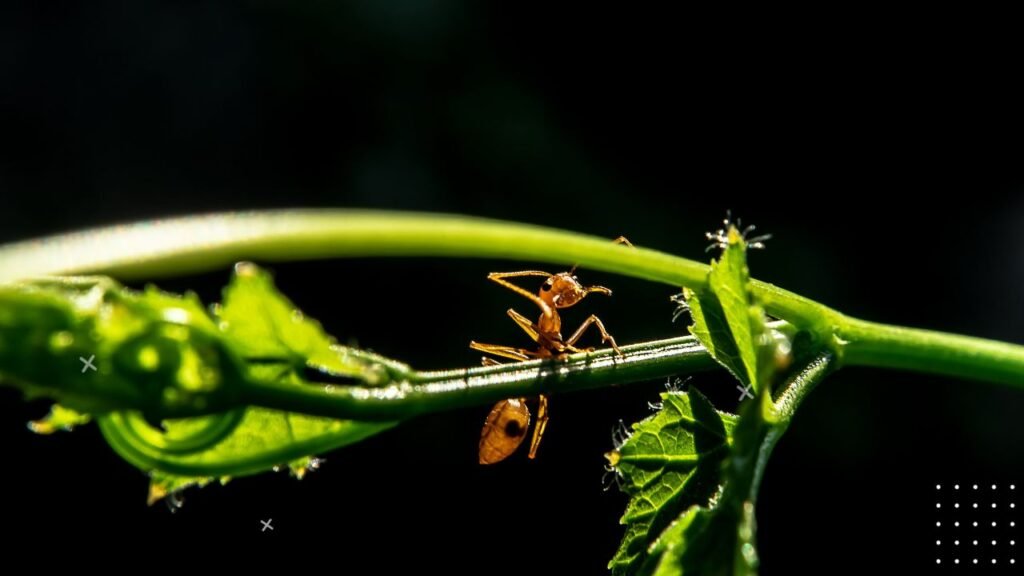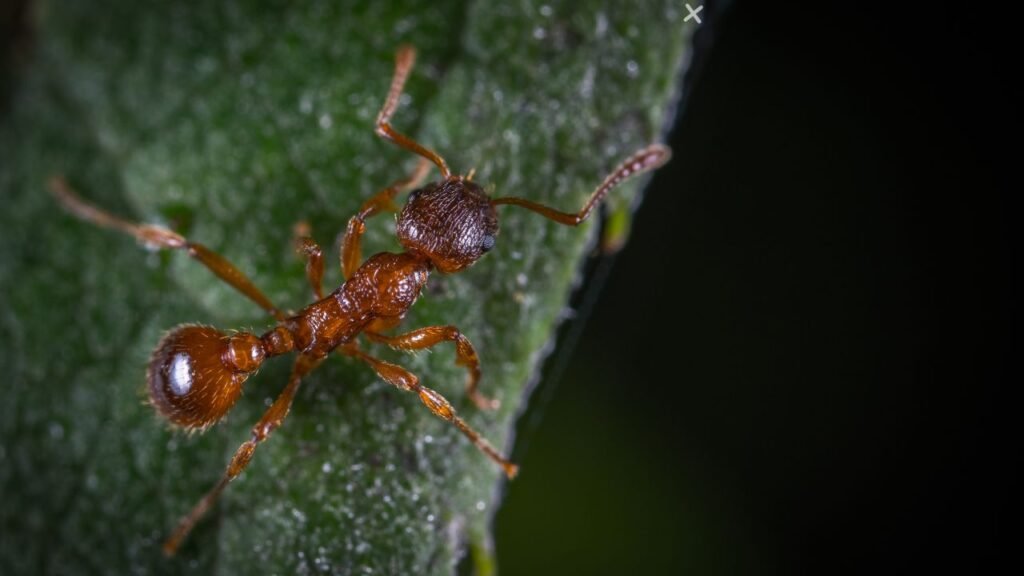


As night falls and darkness envelops the landscape, most of us humans lose the sharp sense of sight we rely on during the day. But what about our tiny, six-legged neighbors, the ants? Do ants experience the same blindness in the dark? Let’s shed some light on the amazing abilities of ants after sundown!
Before examining ants’ ability to see in the darkness, we must first understand their eye structure. Yes, ants do have eyes! But their eyes differ greatly from human eyes.
Rather than a single lens focusing light, ants have compound eyes. Their compound eyes are made up of multiple optical units called ommatidia. Each ommatidium acts as an independent visual receptor, capturing a tiny snapshot of the ant’s surroundings. The combined input from all the ommatidia gives ants a mosaic image with nearly 360-degree peripheral vision – fantastic for detecting motion and gradients of light!
| Eye Part | Function |
|---|---|
| Compound Eye | Provides panoramic vision via multiple ommatidia units |
| Ommatidium | Each unit contains a lens, crystalline cone and light-sensing rhabdom |
| Ocelli | Detect changes in light intensity |
| Rhabdom | Contains photopigments for detecting light |
| Tapetum lucidum | Reflective layer that reflects light through rhabdom again |

Human eyes have a single lens that focuses light onto the retina, where photoreceptor cells send signals to the brain for processing. Ant eyes work very differently.
Each ommatidium has its own cornea, crystalline cone, and rhabdom – the equivalent of the retina’s photoreceptor cells. The crystalline cone helps focus light, while the rhabdom contains photopigments that react to specific light wavelengths.
The rhabdoms are connected to the ant’s optic lobes via individual nerve fibers. Rather than assembling an image, the array of ommatidia gives ants an abstract representation of movement, brightness gradients, and visual contrasts.
While this means ants can’t see crisp images like humans, it’s ideal for sensing motion and light levels – even in dim conditions. The panoramic field of view is also great for monitoring a large area for signs of danger, prey, or navigation cues.
In addition to the basic ommatidia structure, ants have special adaptations making their eyes ultra-sensitive in low light. Three key components help ants see when it’s dark out:
Ocelli – Ants have three simple eyes called ocelli on the top of their head. The ocelli contain wide, fixed lenses ideal for detecting changes in light intensity. This alerts ants to variations between light and dark.
Tapetum lucidum – Many ants have a retroreflective layer called the tapetum lucidum lining the ommatidia. Similar to cats’ eyes, this acts like a mirror, reflecting light back through the rhabdoms for a secondary light absorption. This allows ants to detect much fainter light.
Flattened rhabdoms – Rather than rod and cone cells, ants have long flattened rhabdoms optimized for capturing more photons. Some ants may also have light-sensitive rhabdoms that migrate upwards in darker conditions to boost low light sensitivity.
Together, these adaptations allow ants to utilize incredibly low levels of illumination undetectable to the human eye!
Thanks to these specializations, ants have vision capabilities well-suited for dim environments:
With incredible motion detection, light sensitivity, and spectral range, ants have the ideal eyesight toolkit for life after dark!
| Visual Capability | Description |
|---|---|
| Motion detection | Ommatidia specialized for detecting movement |
| Light sensitivity | Can see down to moonlight levels due to tapetum lucidum etc |
| Rapid adaptation | Quickly adjust between light/dark conditions by changing rhabdom position |
| UV light vision | See some UV wavelengths invisible to humans |

The intricate eyes that provide ants with their unique visual capabilities don’t just appear fully formed. Ant eyes go through a fascinating developmental process as young ants grow:
Remarkably, the basic eye structures formed during pupation can adapt in adults to match environmental light conditions. This helps the ants optimize visual performance in their particular habitat.
Many ant species are primarily active during the daytime (diurnal). Does that mean they can’t navigate or function when the sun goes down? Fascinatingly, evidence shows ants have serviceable night vision allowing them to stay active after dusk!
Here are some clues indicating ants can see reasonably well in the dark:
While ants may not have perfect 20/20 night vision, their adapted eyes provide sufficient capability to perform essential tasks under the cloak of darkness.
However, the night vision of ants does have its limitations in very dark settings:
So while ants have adapted night sight, environments of total darkness still pose substantial challenges. Their vision works best in conditions with at least traces of light.
| Ant Type | Vision Usage |
|---|---|
| Foragers | Finding food sources, navigating to nest |
| Scouts | Mapping terrain, locating resources |
| Soldiers | Spotting threats, guarding colony |
| Mating males | Detecting flying queens by sight |
| Queens | Choosing nest site, flying to start new colony |
When their eyes reach the limits of usefulness in blackness, ants switch to other senses to take up the slack:
By combining sensory inputs, ants acquire impressive environmental awareness in pitch-black settings that would leave humans utterly lost and blind.

For ants that fly, like virgin queens and males, bright lights can spell peril or promise. Here’s the complex allure artificial lights hold for ants taking to the air:
So ant night flights demonstrate both the potential benefits artificial lights provide as well as the dangers of these false beacons.
Beyond being merely an alternative to vision in darkness, ants actively utilize light patterns and cues for navigation:
Just as sailors once navigated by the stars, ants similarly harness sun, moon, and skylight patterns as vital navigational aids.
Light not only guides individual ant behavior, but also provides essential signals influencing the whole colony’s activity cycles:
By tracking light patterns across days and seasons, ant colonies effectively organize essential tasks to match their complex lifestyles.
Preferring to avoid the hot sun, carpenter ants have distinctly nocturnal behaviors reflecting enhanced night vision abilities:
Thanks to these useful adaptations, carpenter ants can take full advantage of the cooler night hours while we humans are left blind and sleeping!

While ants may not see as clearly at night as cats, owls, or lemurs endowed with true night vision, their evolved eyes provide the precise visual capabilities needed to support their particular ant lifestyles. Through exquisitely adapted vision, specialized insect senses, and effective navigation strategies, ants have conquered the challenge of the night.
So the next time you spot ants active after dark, marvel at their ability to successfully forage, navigate, communicate, and thrive under the pale moon’s glow. Although we switch on lamps and lights to banish nighttime blindness, for ants, darkness poses no obstacles their evolutionary innovations can’t overcome.
When the sun sets on the ant’s miniscule yet intricate world, their capable eyes and senses stand ready to guide them through the shadows. Vision finely tuned to the requirements of ant existence has allowed these tiny insects to flourish on a planet half cloaked in night for millions of years. Simply put, ants eyes see precisely what any ant needs to see.
Do ants have eyes?
Yes, ants have two compound eyes made up of multiple facets called ommatidia, as well as three smaller simple eyes called ocelli on the top of their head. The ocelli help detect light while the ommatidia provide ants with a mosaic view of their surroundings.
Why can’t ants see clearly like humans?
Each ommatidium in an ant’s compound eye captures a small isolated pixel of the visual field. This provides very wide peripheral vision but low resolution compared to human vision which consolidates input from the entire retina into a coordinated image. The tradeoff provides ants visual data tailored to their needs.
What allows ants to see in very low light conditions?
Special adaptations like flattened light-gathering rhabdom cells, reflective tapetum lucidum, and rapid sensitivity adjustments give ants visual capability down to moonlight levels. This enables them to stay active after dark.
Do ants have worse vision at night compared to daytime?
Yes, ants have some limitations at night like losing color vision, lower visual clarity, and increased reaction times. Total darkness impairs their vision substantially more than dim conditions with traces of light. But their adapted eyes overall function adequately for basic tasks in darkness.
How do ants get around when it’s too dark for their eyes?
When vision fails in pitch blackness, ants utilize their sensitive antennae to detect touch and vibrations. Smell and memory also provide navigation assistance in total darkness. Following pheromone trails left by nestmates enables blind marching in the blackest nights.
